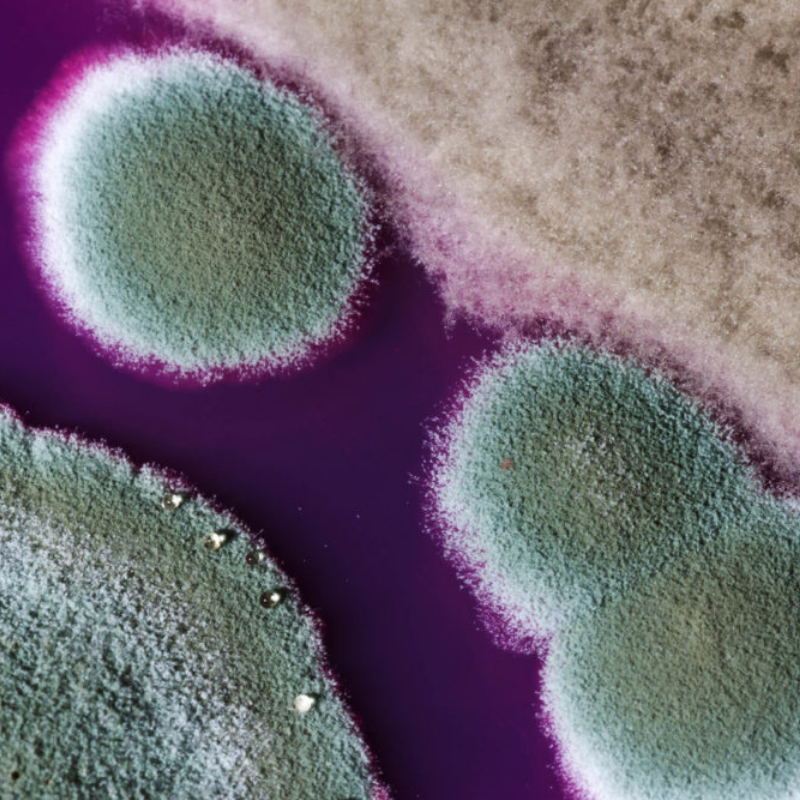September 4th, 2020
Everything to Know About Mold Toxicity

Mold can be an overlooked health threat
We’ve talked a lot about toxicity here, and the topic of toxins is frequently one that we address in this practice. Mold toxicity is something that many people aren’t aware of, but is something that is important to understand since it can be the root cause of many health ailments.
What is mold?
Most people think about the fuzzy brown or greenish substance that appears on old cheese or inside a can of old tomato sauce when they think of mold. It is a type of fungi that grows both indoors and outdoors. It requires moisture to grow and its growth damages whatever it is living on. While most types of mold tend to prefer humid, warm temperatures, it can also grow in cold climates as well as inside of refrigerators. While it usually has a rotten, musty odor, it is also common to go completely unnoticed.
Some common places that mold grows include:
- Foods such as cheese, canned goods, leftovers, meats, and fruit
- Damp carpets or wood flooring
- Soggy drywall
- Pipes with current or past water leaks
- Ceiling tiles
- Wallpaper
- Cardboard
- Fabric and upholstery
- Piles of wet leaves
- Garbage cans
Ways that mold can harm the body
Most people are exposed to some degree of mold every day by breathing in the mold spores in the air or by eating foods which may have the beginnings of mold growth in them. Generally, this level of exposure doesn’t cause any problems. However, frequent or excessive exposure to mold can lead to health complications caused by mold toxicity.
Some potentially serious conditions that can arise from mold toxicity include:
- Autoimmune diseases
- Weakened immune system
- Reproductive damage including infertility
- Neurotoxicity leading to brain disorders
- Gene mutations which can lead to things like cancer
- Inflammation, which is a root cause of many other health ailments
Symptoms of mold toxicity may include:
- Respiratory conditions such as asthma, respiratory infections, coughing, wheezing, and general difficulty breathing
- Allergies
- Headaches
- Fever
- Sinus symptoms
Who is at risk and what you can do to protect yourself
Everyone should be aware and cautious of mold exposure and take precautions to protect yourselves. People who are immunocompromised, such as those with autoimmune conditions, cancer, or who take medications such as steroids that weaken the immune system are at increased risk of the negative effects of mold toxicity. In addition, some people are more sensitive to mold than others.
If you suspect mold exposure and/or have any of the symptoms that might indicate toxicity, it’s important to get evaluated, tested, and treated for it. To help reduce mold exposure, it is a good idea to take precautions such as having your home or workplace evaluated for mold. In addition, be careful to reduce exposure to moldy foods by checking everything you eat for signs of mold before consuming. And people who have environmental exposure to mold may also need to avoid these moldy foods as well.
Some foods most prone to mold include:
- Cheese
- Other dairy products like sour cream, milk, and buttermilk
- Breads and other grains made with yeast
- Mushrooms
- Vinegars and foods made with vinegar such as salad dressings and other condiments
- Previously opened canned jam’s, sauces,
- Pickled or fermented vegetables
- Processed meats like hot dogs, bacon and sausages
- Fresh and dried fruits
- Juices
- High sugar foods like desserts
- Leftovers that are more than 3-4 days old
Bottom Line
You may be exposed to mold more often than you think, and this can be especially concerning for people who have a mold sensitivity or are immune compromised. Mold toxicity may be the root cause behind many health ailments, so it is definitely something to be aware of and consider. Being careful to address and eliminate any mold exposure is the best step you can take to reducing your risk of mold toxicity and in recovering from mold exposure.




